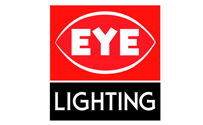For those of you who missed the last Application watchdog webinar, this article serves as an overview of what was discussed.

Efficiency
| Efficiency varies with lamp size, but generally the higher the wattage the higher the efficacy. Efficacy can range from 100-130lm/W. These lamps generally run on magnetic control gear so considerable gear losses, circa 10% power, are usual. |
Capital Cost
| CMH lamps offer a cost effective solution to most applications as they offer a wide range of light outputs and can run in most climatic conditions. |
Maintenance Cost
| A standard CMH lamp will offer a lamp life of roughly 18,000-24,000hours, however twin arc lamps are available in the more common high bay wattages, which offer extended lamp life up to 50,000hrs. CMH is a tried and tested light source with good reliability under most conditions. |
Controllability
| This is the main drawback of CMH lamps. Because they have a long warm up time and do not ‘hot re-strike’ they can not be switch on and off quickly. They are almost always controlled via magnetic control gear which can offer dimming to a single level, but is not common. Electronic control gear is also available, but using this then affects two of the main positives of CMH i.e. price goes up and the reliability under certain conditions becomes questionable. |
Glare | Because HID lamps have been available for some time, the issue of glare has been addressed through luminaire design and lamp finish. HID High bay luminaires generally have the lamp recessed into the fitting, which reduces the viewing angle of the lamp. Some fixtures also have visors that completely reduce any glare issues. CMH lamps are often coated as well, which reduces the intensity of the light they emit by effectively increasing the surface area of the light source. |
Efficiency
| Fluorescent lamps are relatively efficient at the light source, circa 100lm/W. However, one of the draw back with fluorescent is that the size of the lamp makes controlling the light difficult, so the photometric performance of a fluorescent luminaire is restricted. The lamp sizes are also limited to a maximum of 80W, so many lamps are required to compare to a 400W HID luminaire. |
Capital Cost
| Fluorescent high bay luminaires very roughly speaking will cost twice that of a standard HID high bay luminaire. |
Maintenance Cost
| Fluorescent lamps are a very well established and reliable light source with a standard life of 20-30,000 hours. However, there are super long life lamps available in both T5 and T8 that can offer lifetime in excess of 50,000hours. The number of lamps required is also something to consider. Four times the number of lamps is four times the number of lamps to fail and need replacing. |
Controllability
| These days, fluorescents are controlled with electronic control gear as standard. This allows them to be readily dimmed and switched, so can be easily integrated into a control system to take advantage of energy savings regimes such as occupancy sensing, constant lumen output and daylight harvesting. |
Glare | Fluorescent lamps can be used in the most open of luminaires with no risk of glare being an issue. Because they have a large surface area, the intensity of the emitted light is very low. Flicker can be a problem if they are not powered by high frequency (HF) control gear, but any luminaire from a reputable supplier will be supplied with HF control gear. |
LED
Efficiency
| LED chips have developed to a stage where they can run at higher efficacies than even the most efficient CMH lamps. LEDs can operate at up to 140lm/W in application. |
Capital Cost
| LED luminaires are generally the most expensive option. Roughly an LED high bay fitting will cost three times that of a HID equivalent. The price between different LED luminaries can also differ considerably, but you usually get what you pay for. |
Maintenance Cost
| LEDs can offer very long lifetimes, well in excess of 50,000hours, but this is completely dependent on each individual luminaire type in a specific application. Temperature is one of the key things to consider. A hot environment will reduce the efficiency of the luminaire and also reduce the lifetime by increasing the speed by which the LED chip degrades. Conversely, a cold ambient temperature will increase efficiency and life time. In extreme cold environments, make sure the entire luminaire will withstand the cold – it is only as strong as the weakest component. |
Controllability
| Like fluorescent lamps, LEDs are electronic and can be dimmed and switched continuously. LEDs, on the other hand in fact benefit from dimming. As you dim and LED chip, the efficiency not only increases, but the life time is also extended. |
Glare | Glare is a considerable issue with LED luminaires. Many high bay luminaires available have the LED chips mounted on the surface with no secondary optic/visor to soften the intense light emitted from each LED chip. A common comment from LED installations is that they are uncomfortable to look at. Look for luminaires that are designed to control the glare. This can be the use of a frosted visor or a diffuse reflector material with recessed LED chips to reduce the viewing angle. |
So there you have it, an overview of the most recent Application Watchdog webinar. Alternatively, re-listen to the webinar
click here
